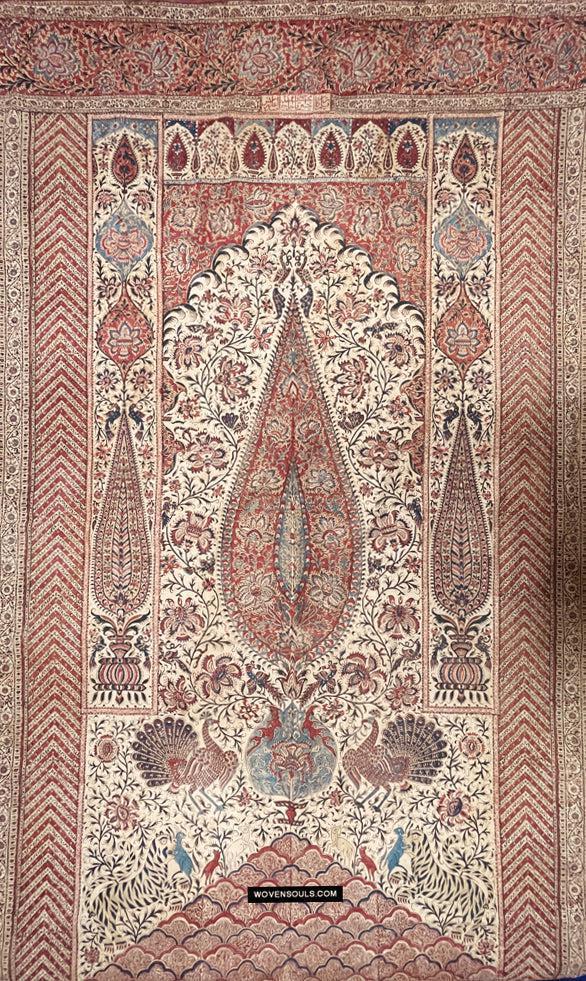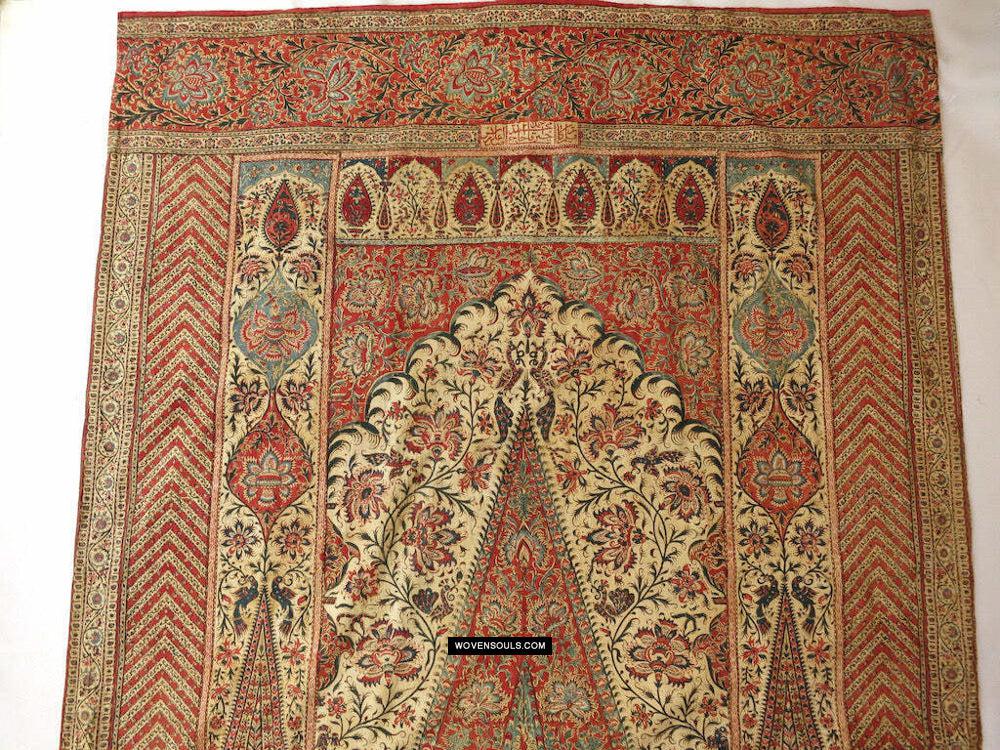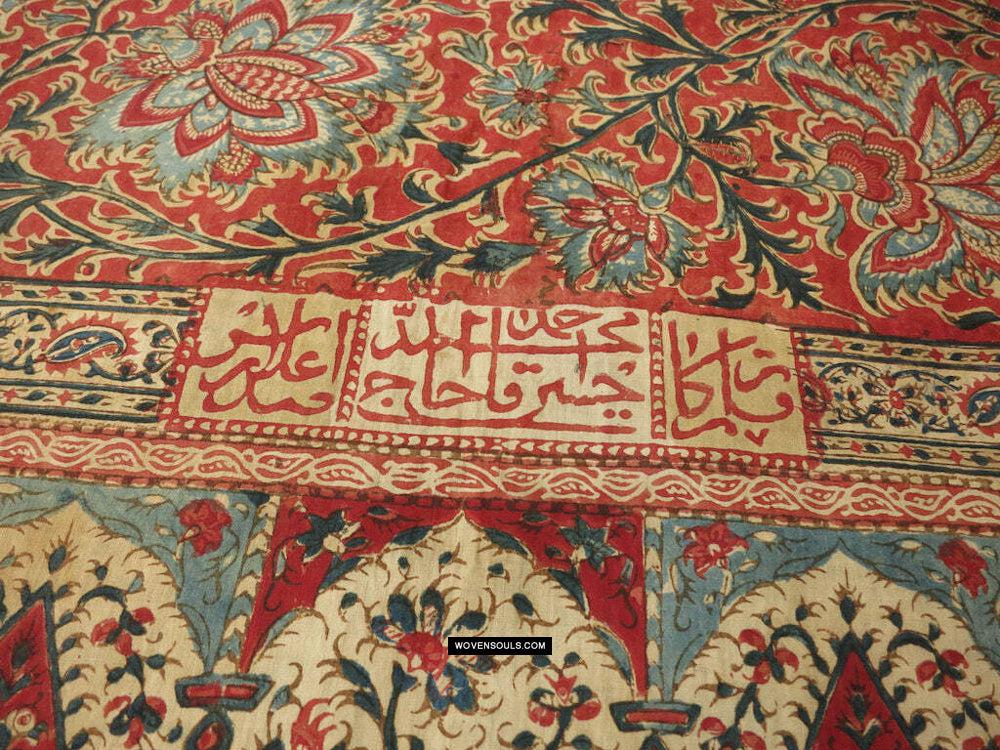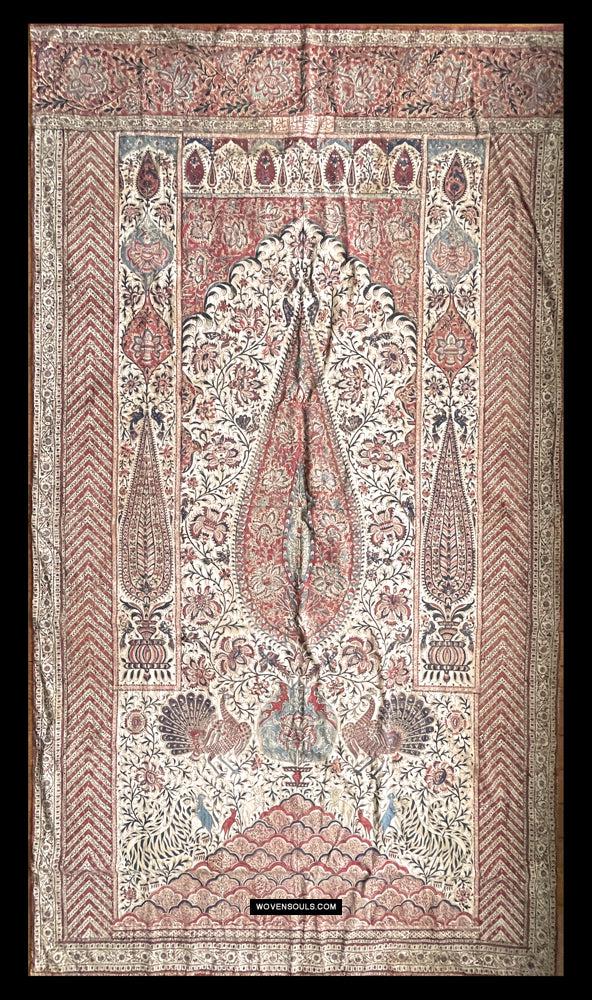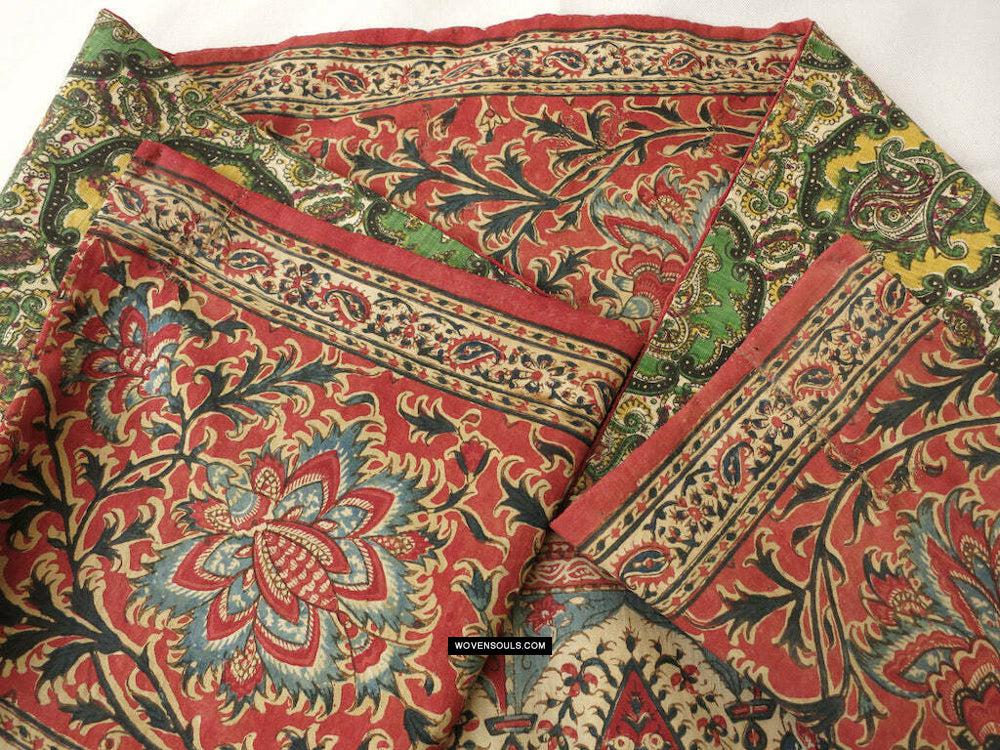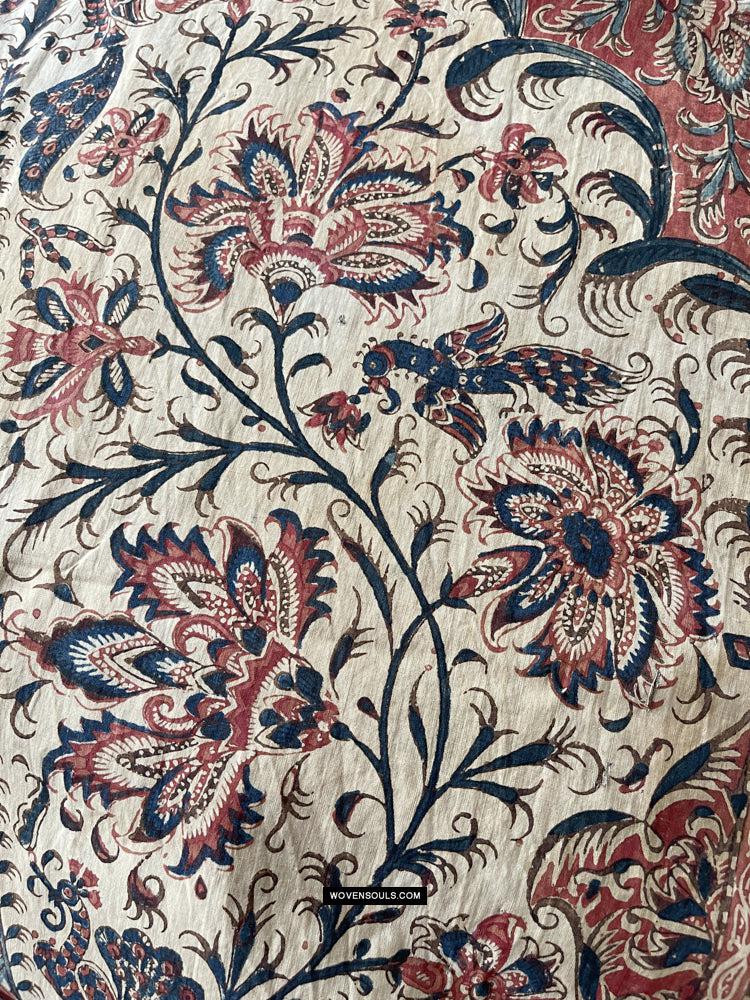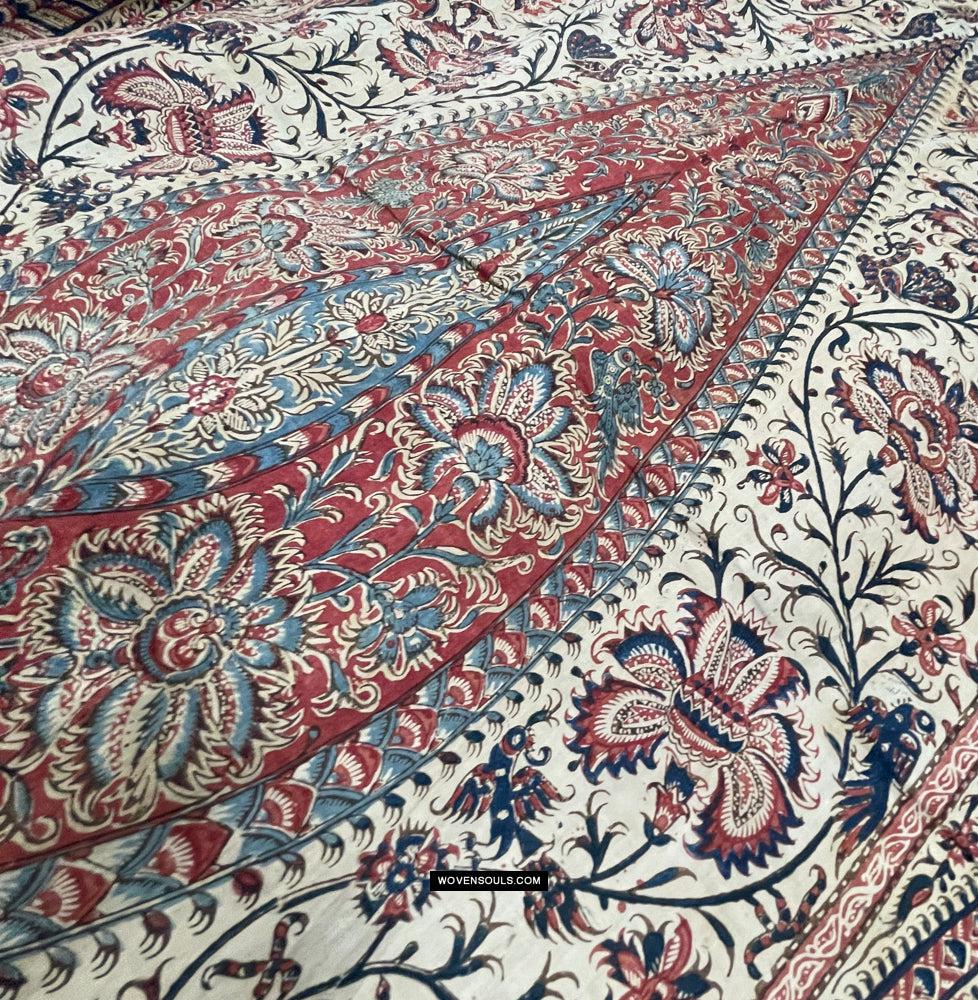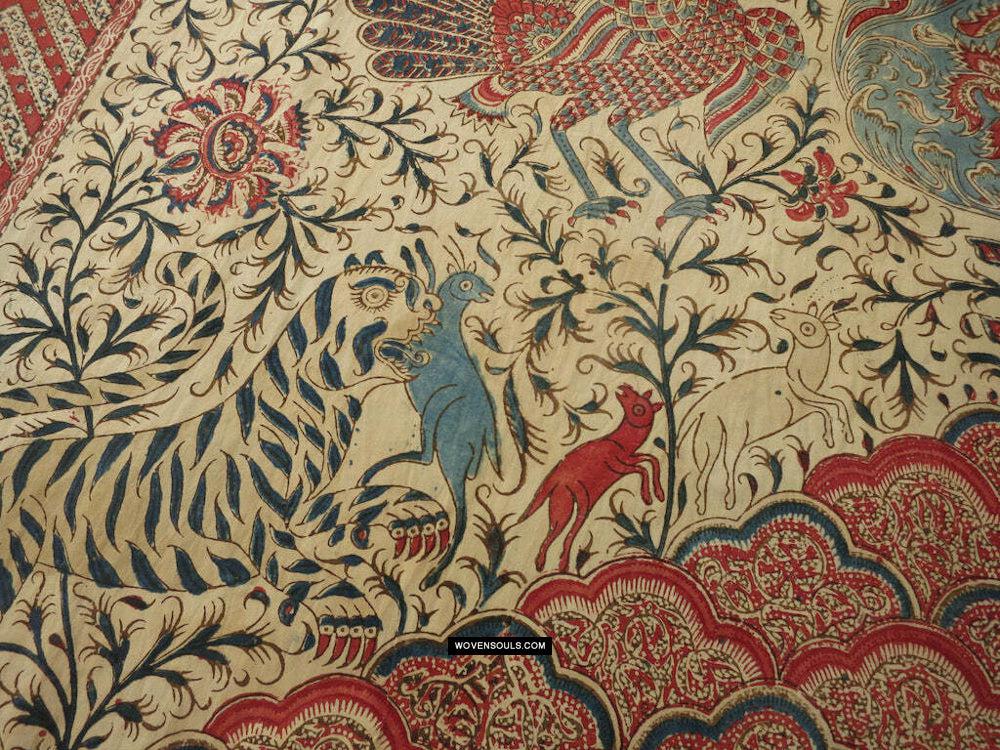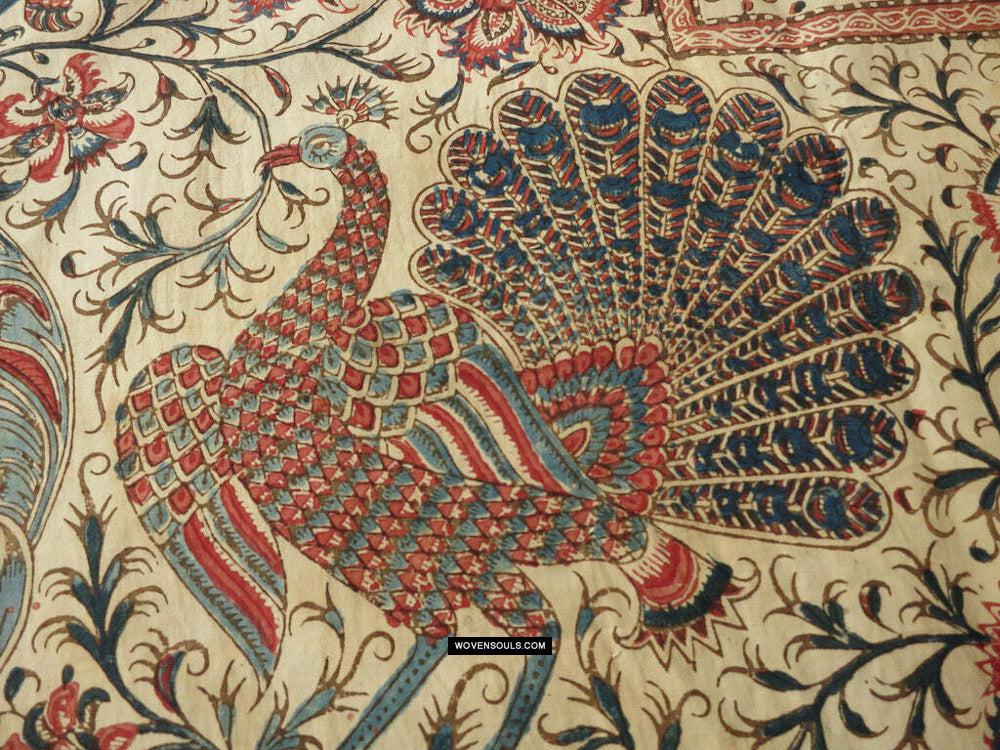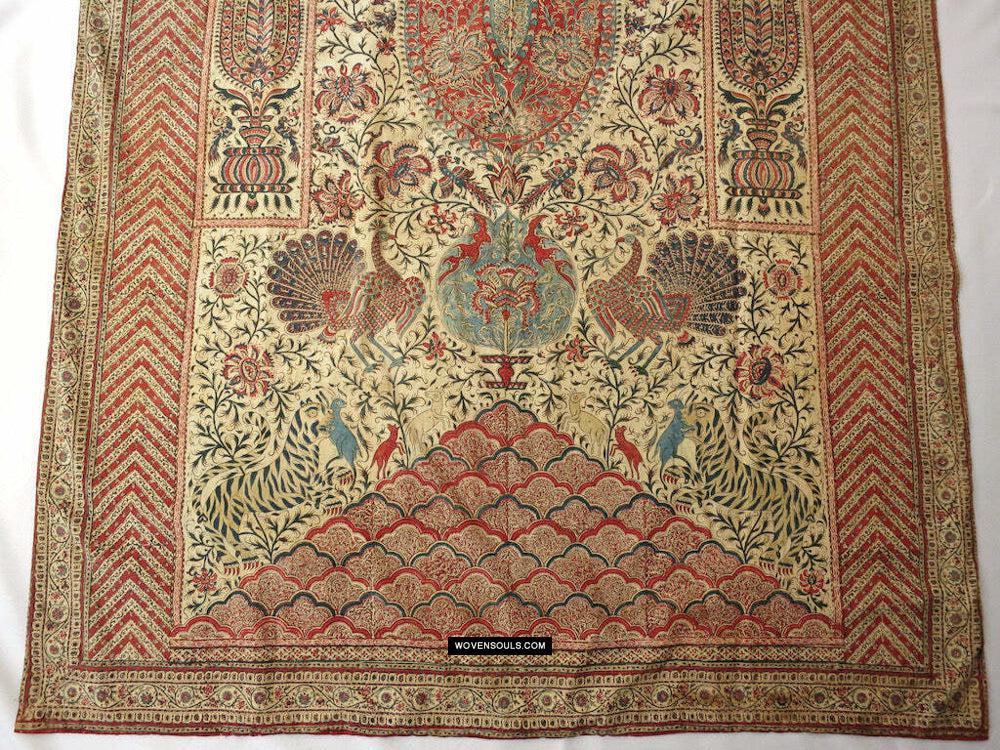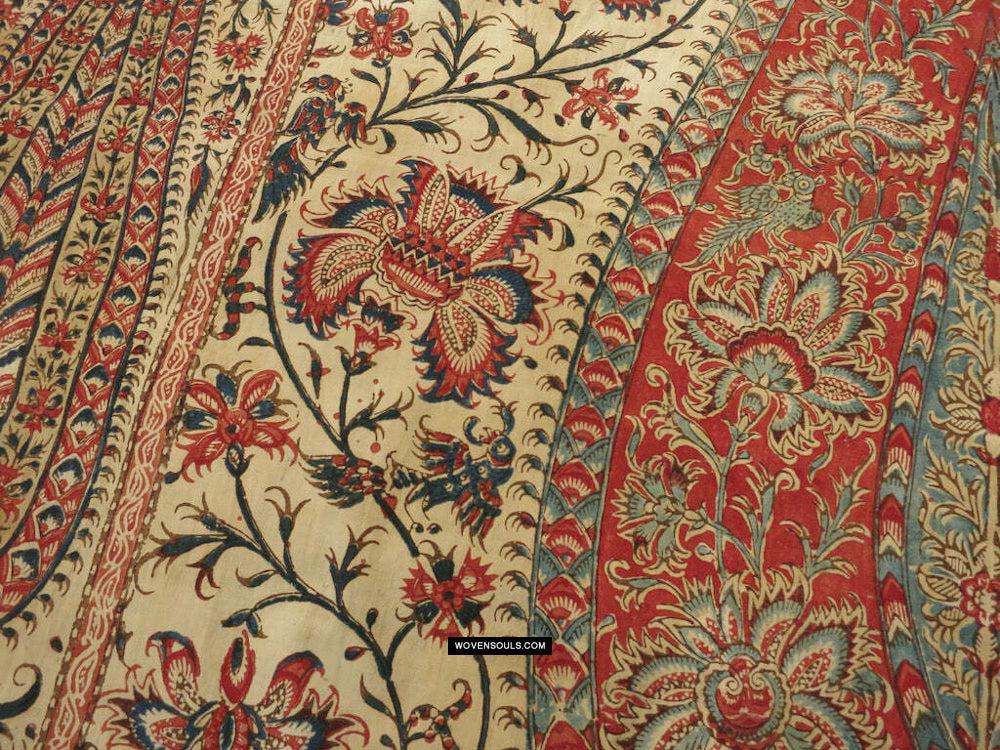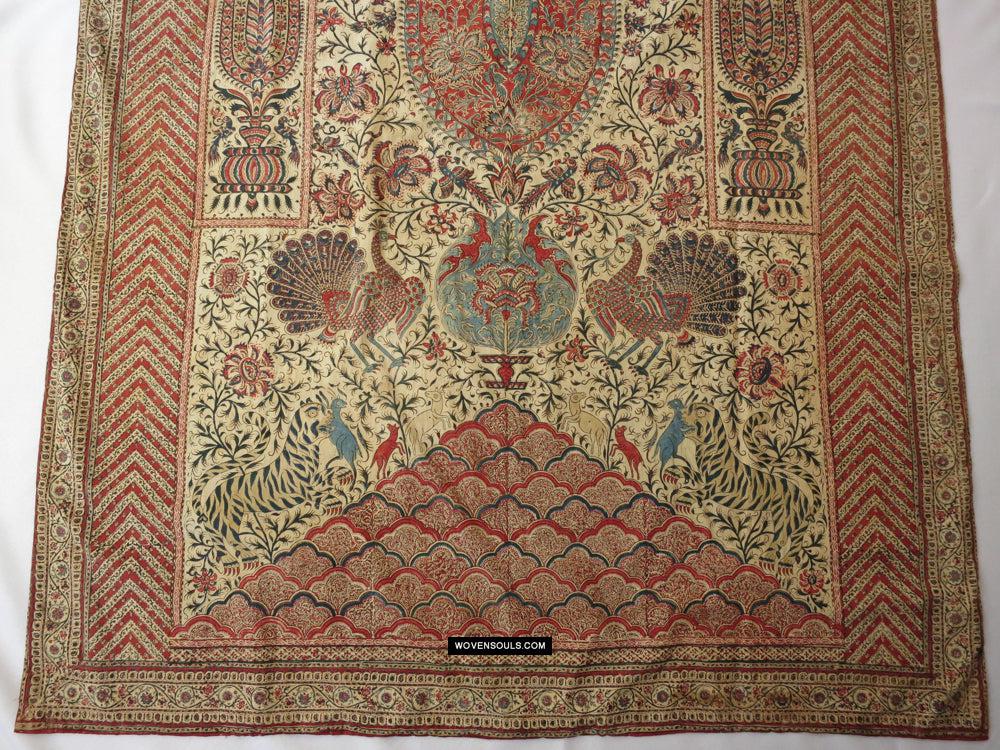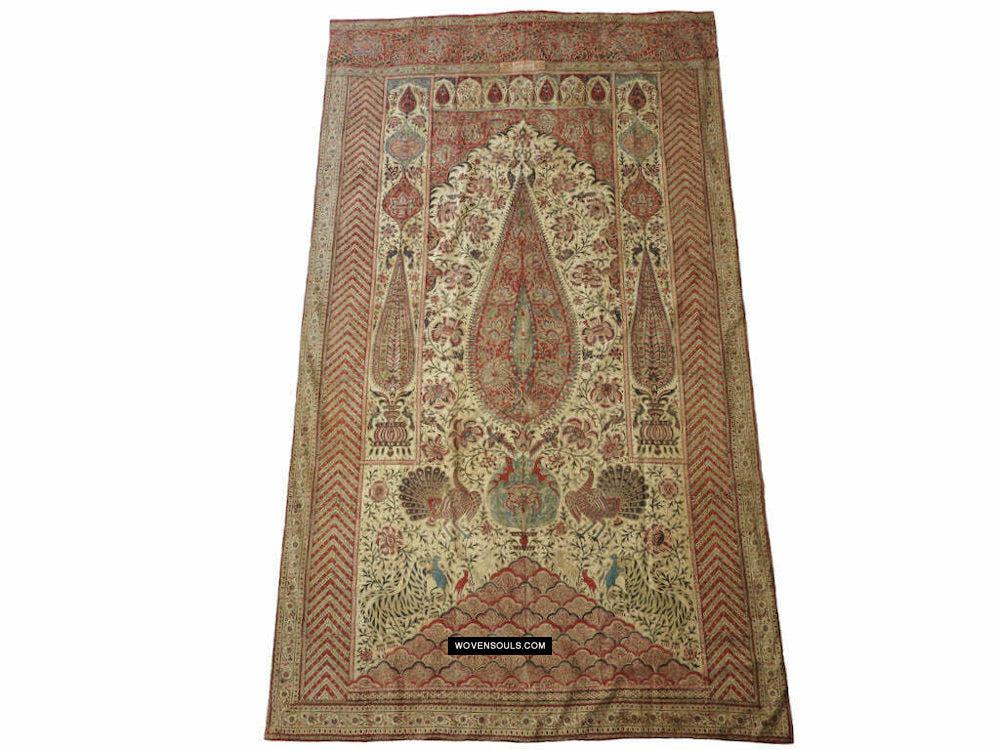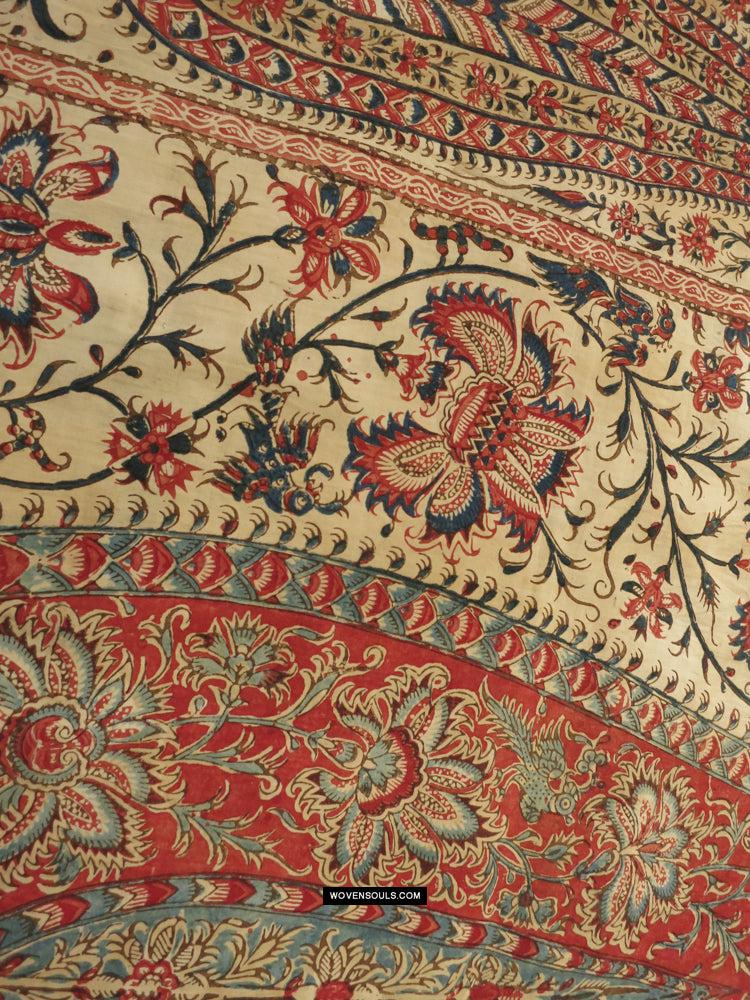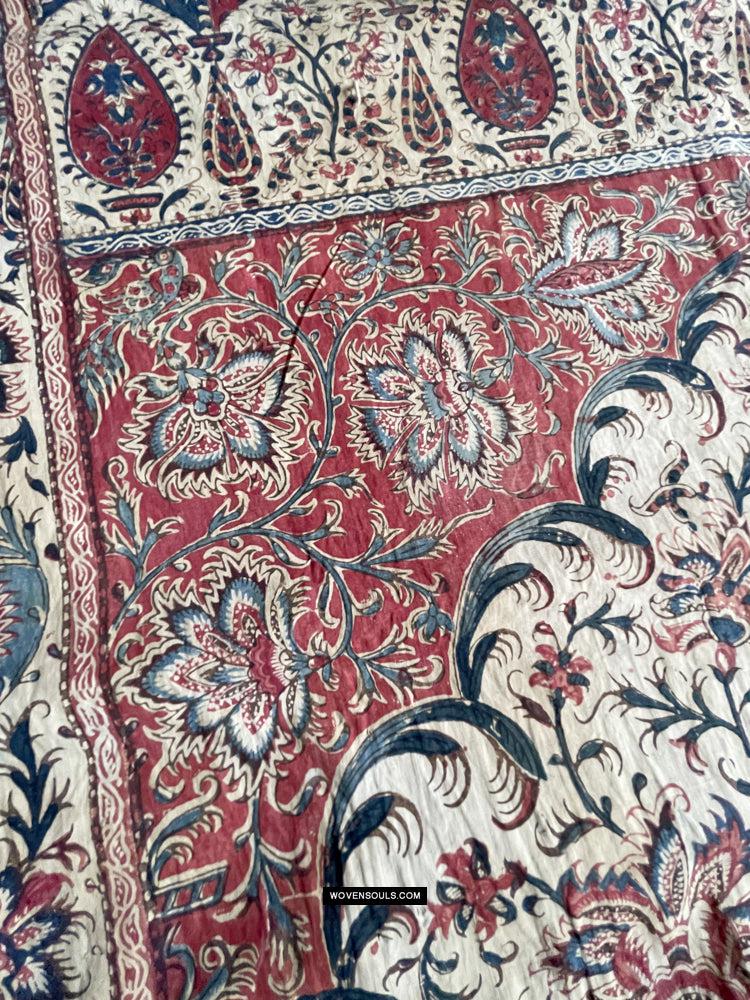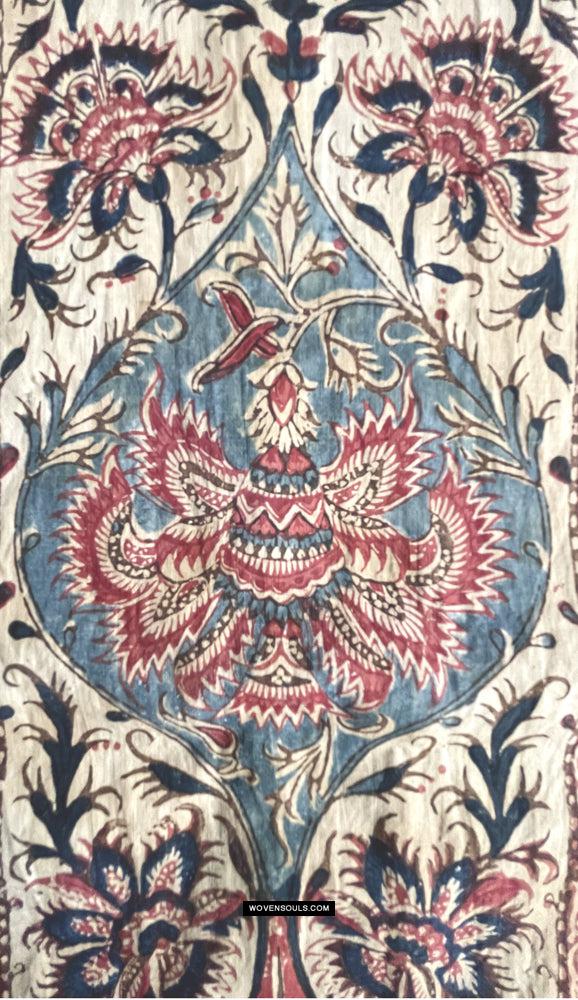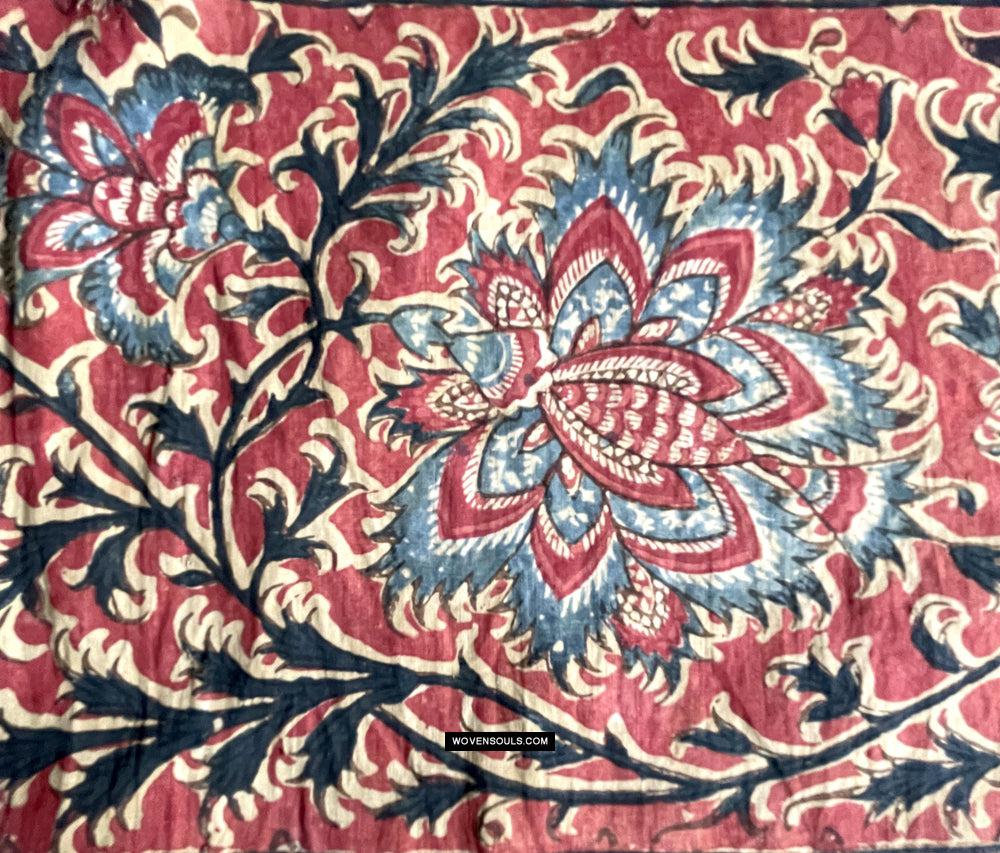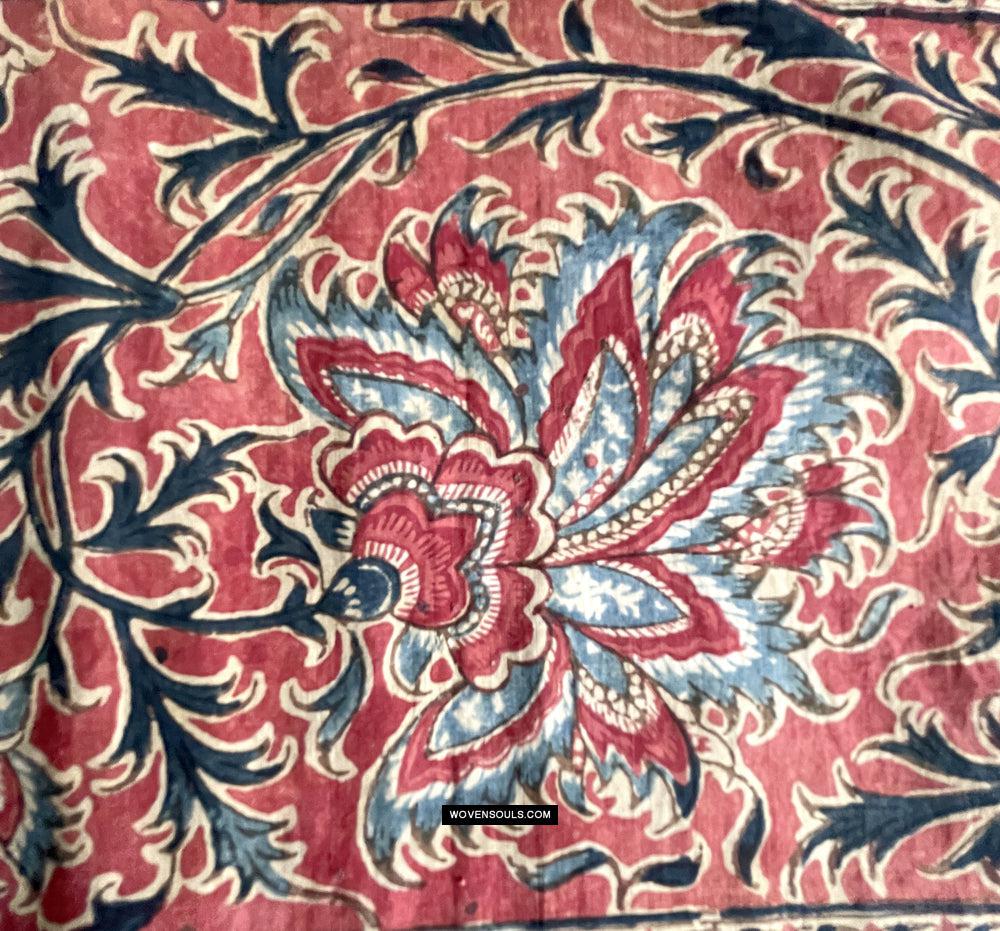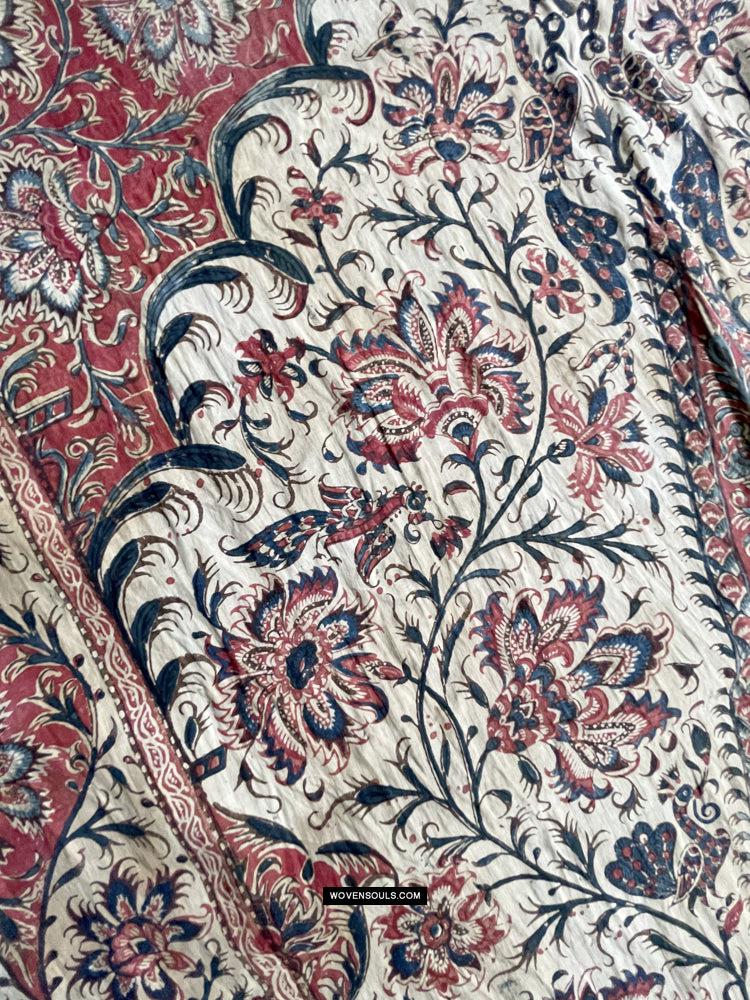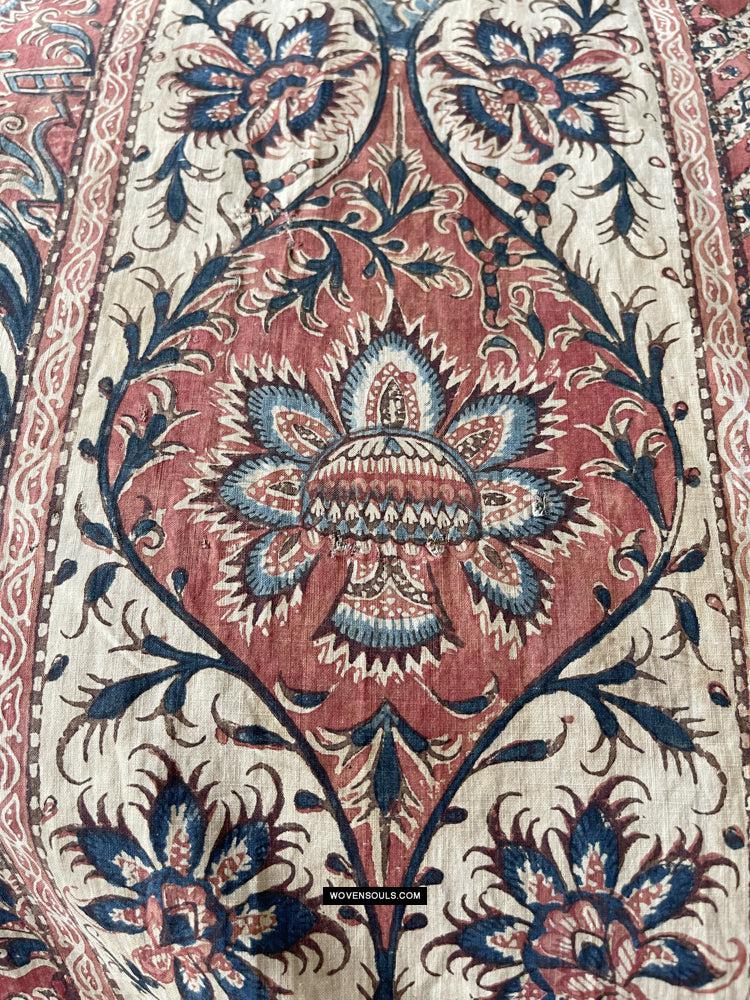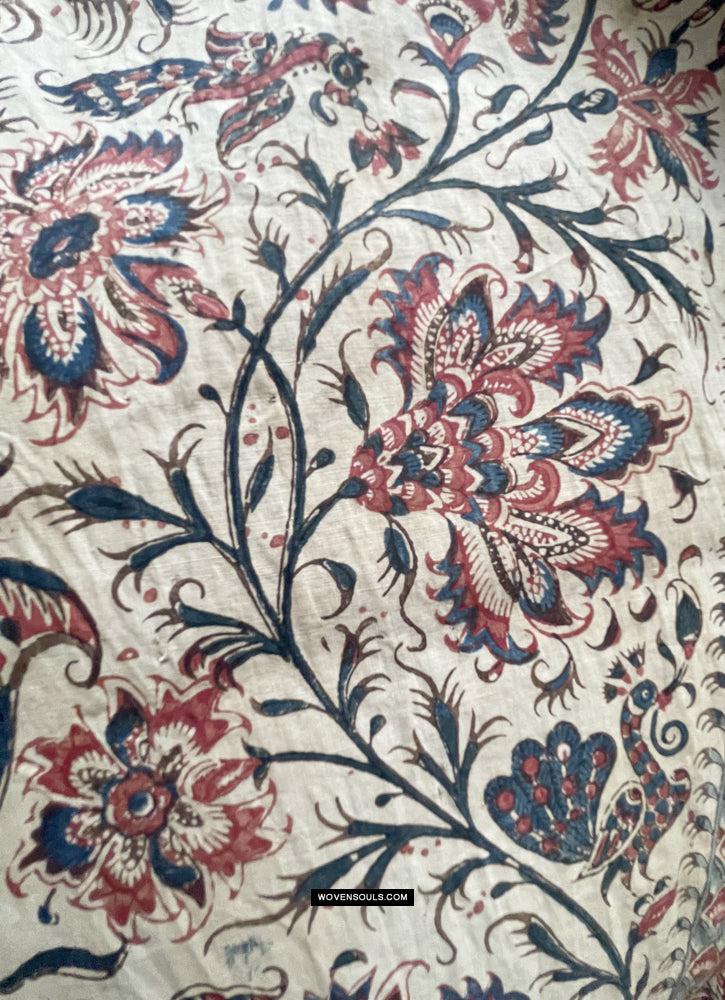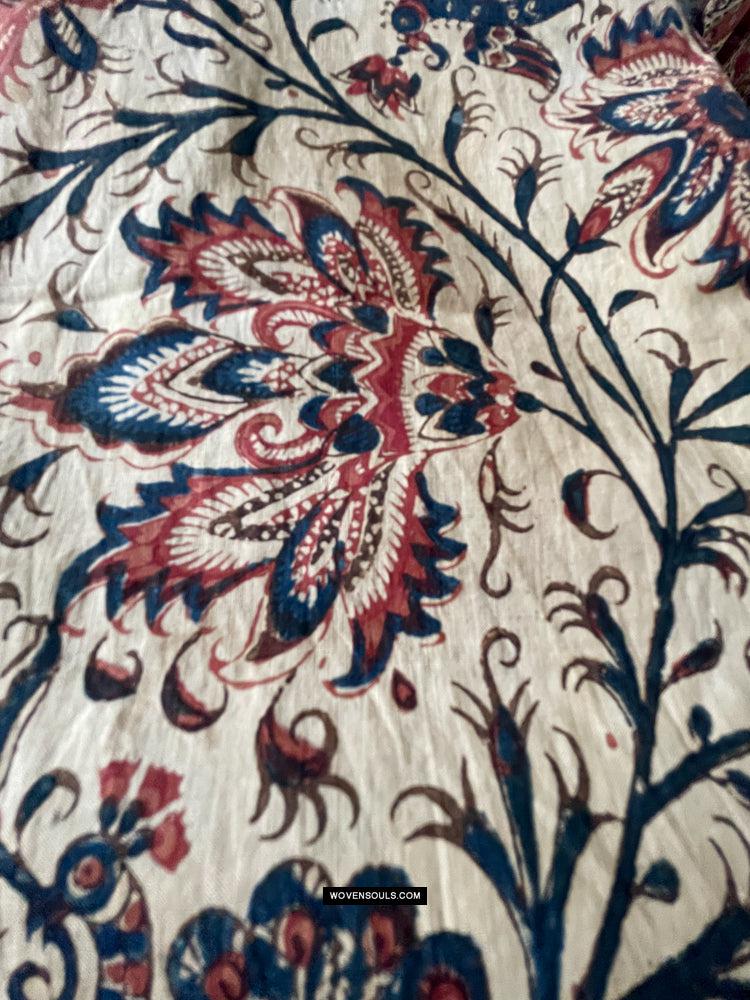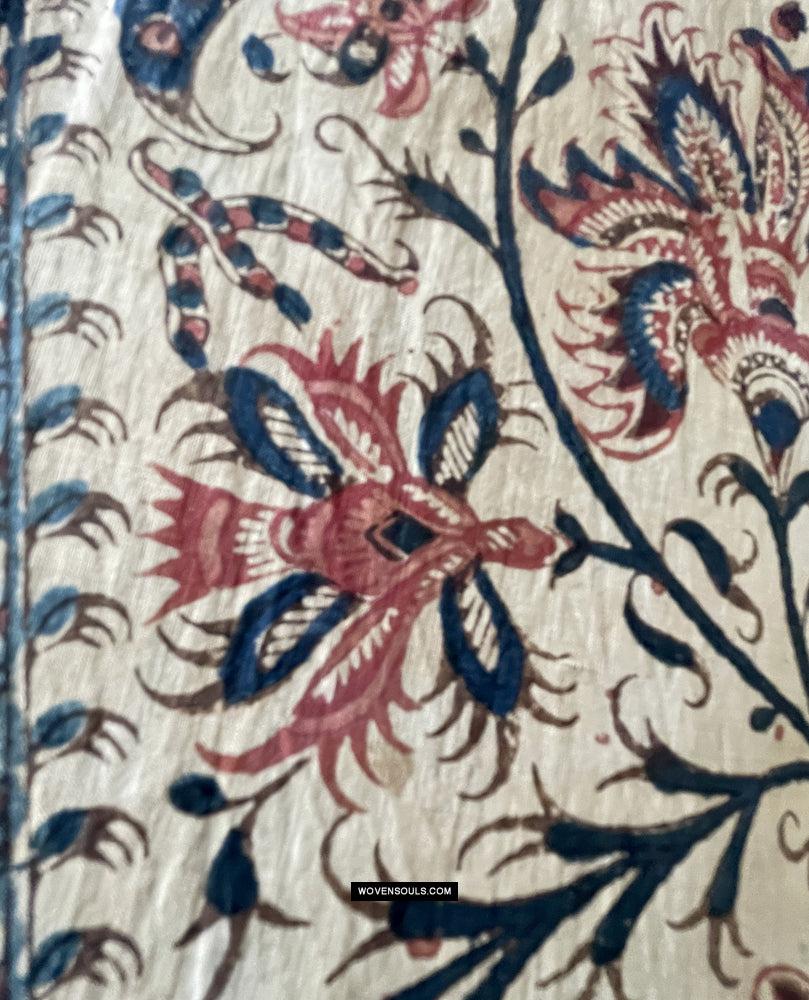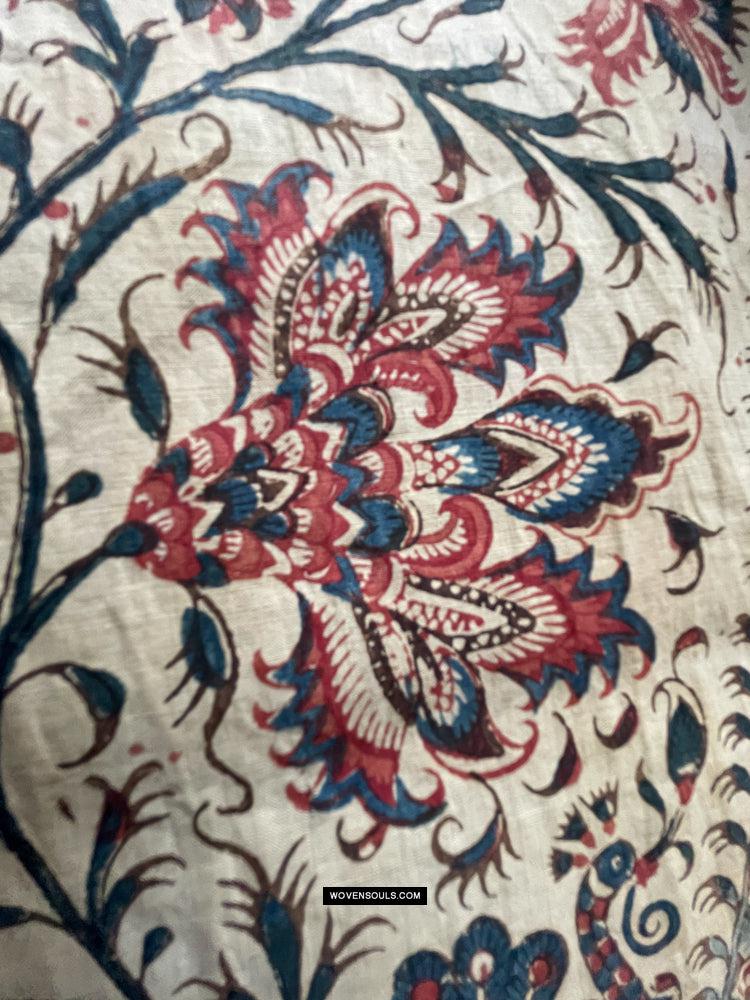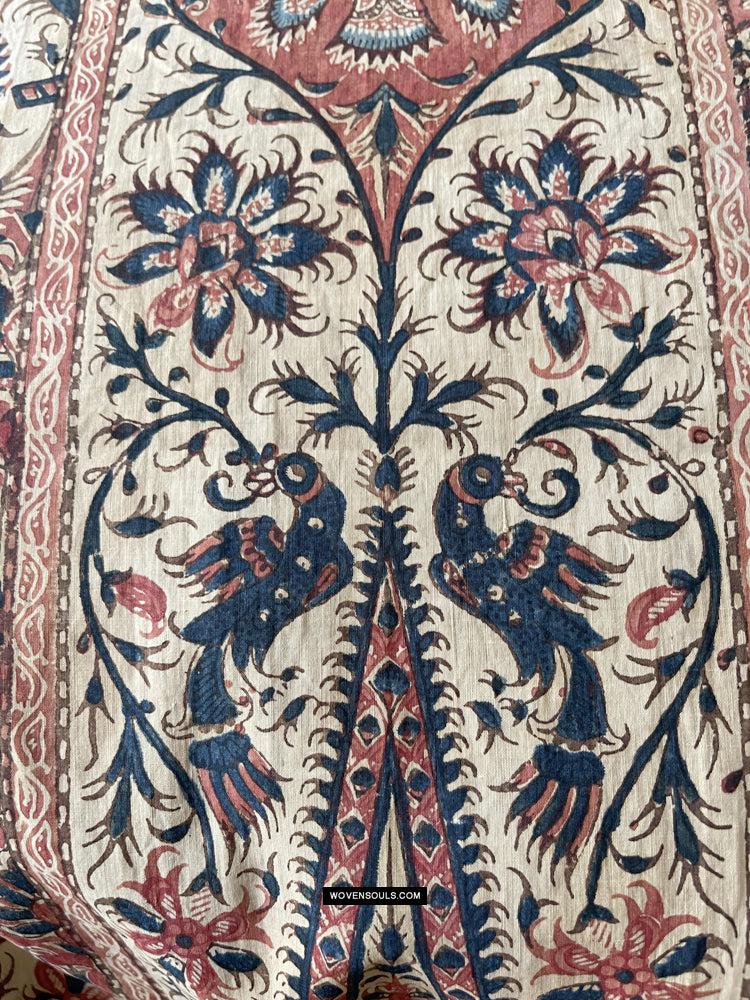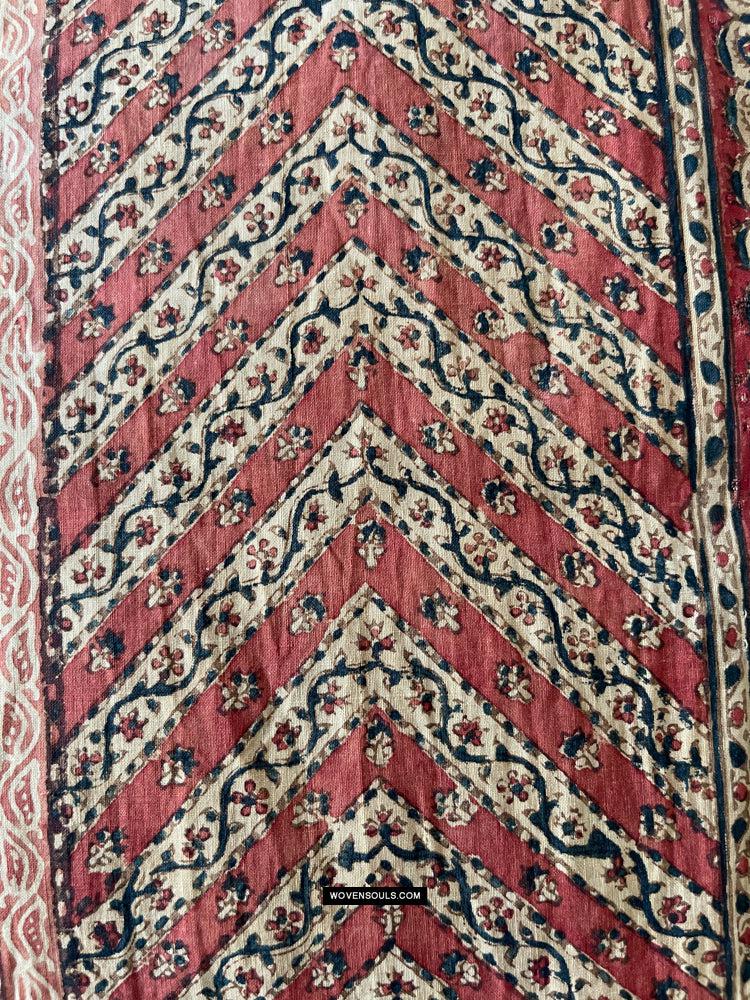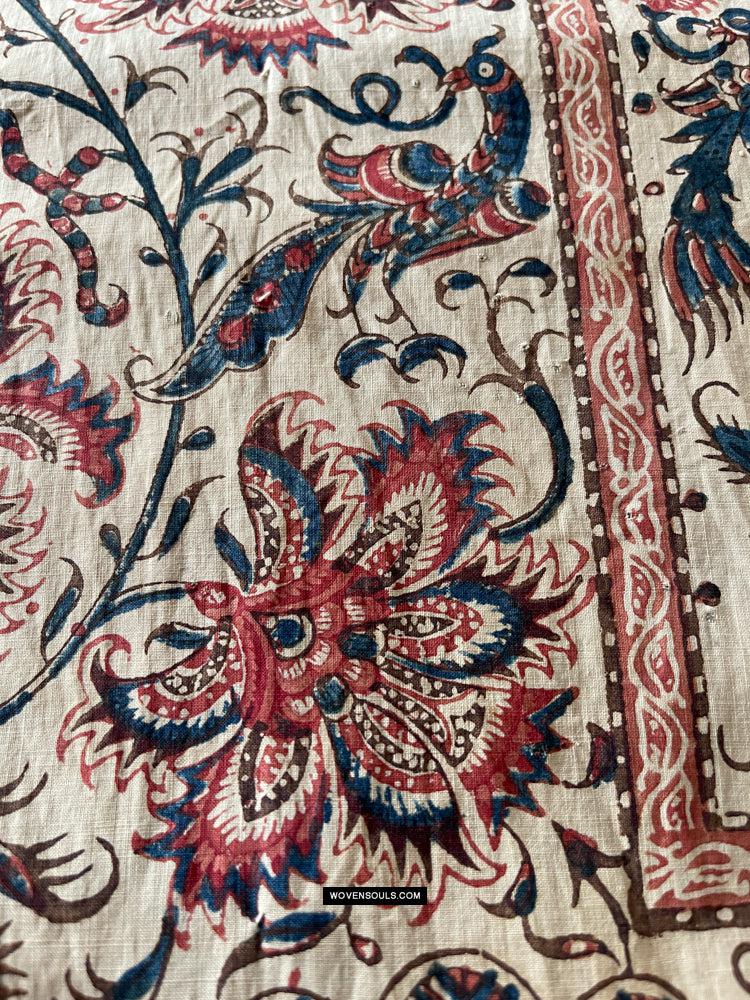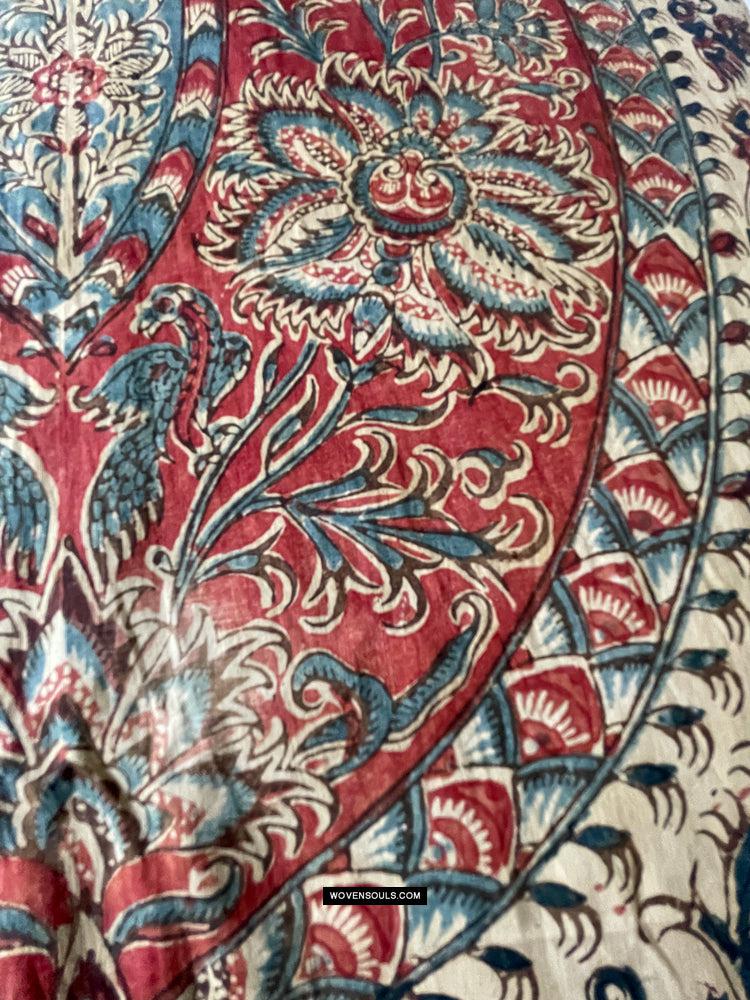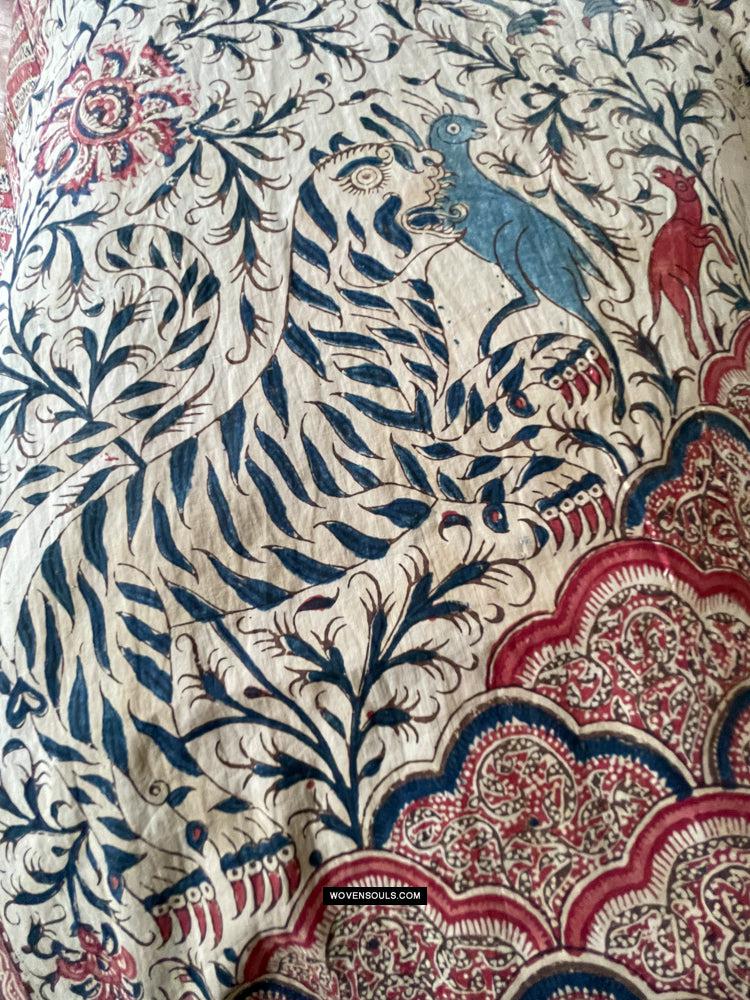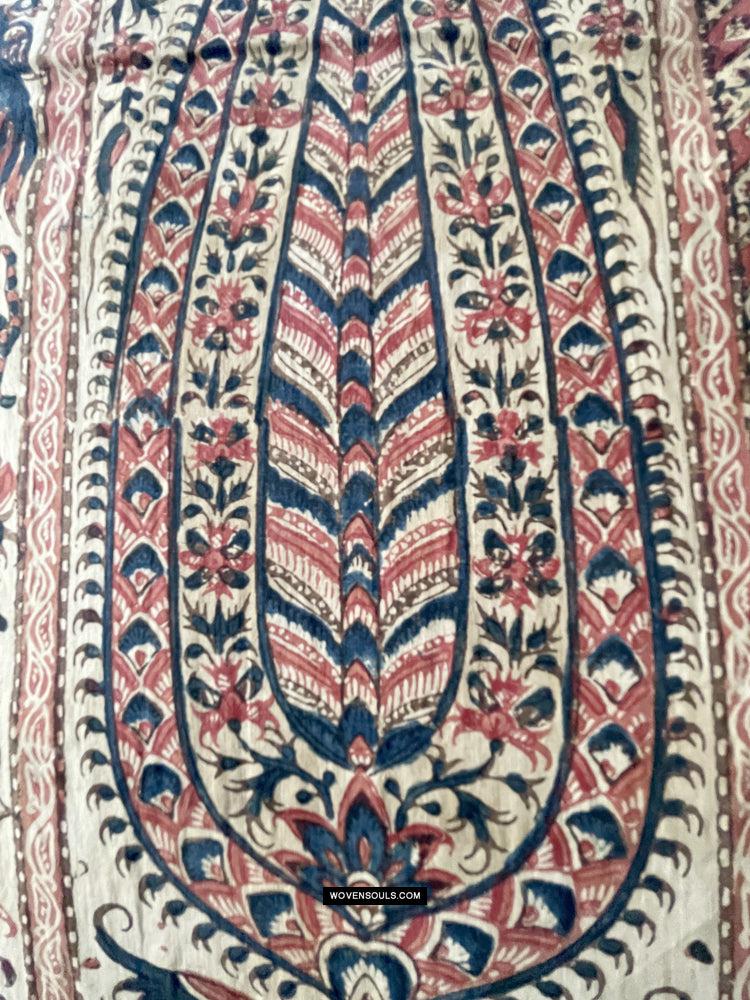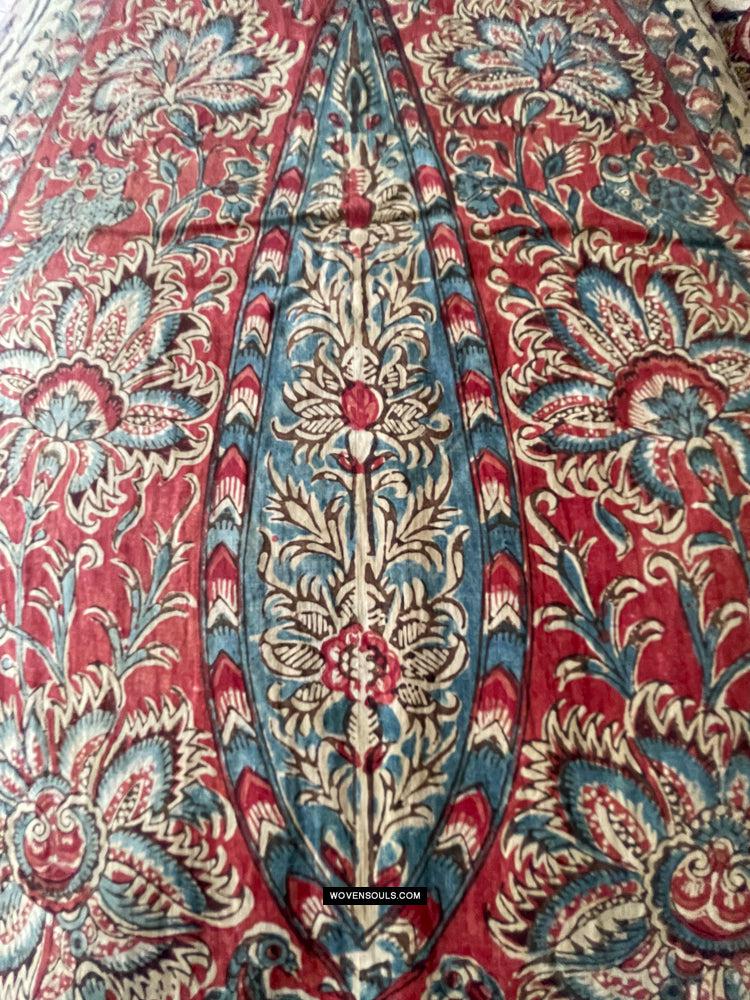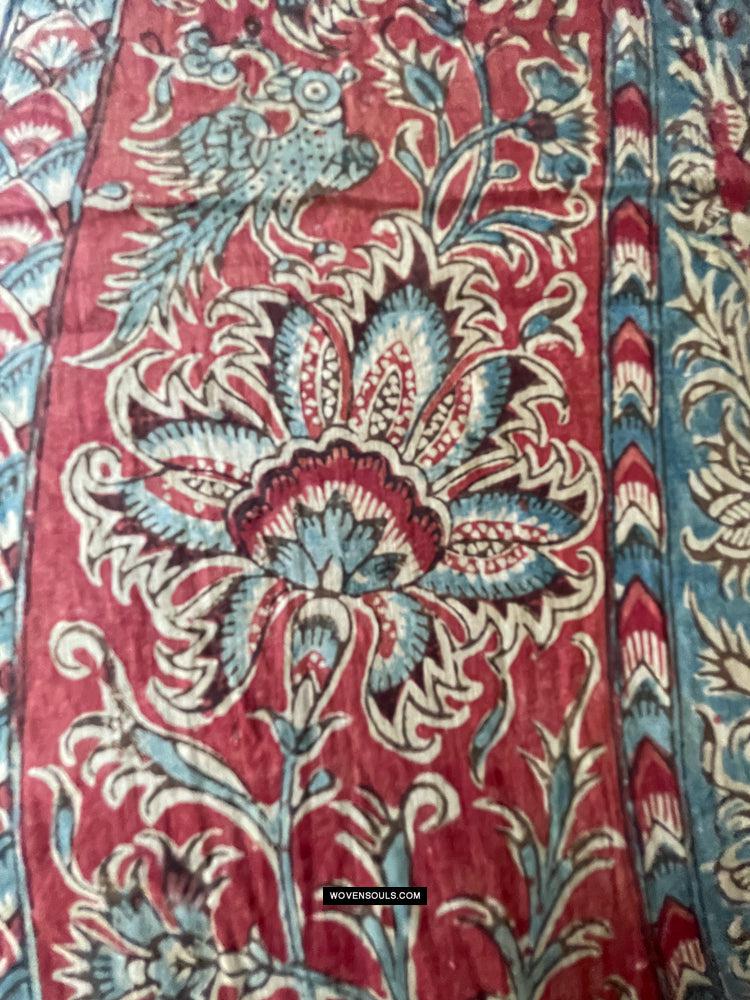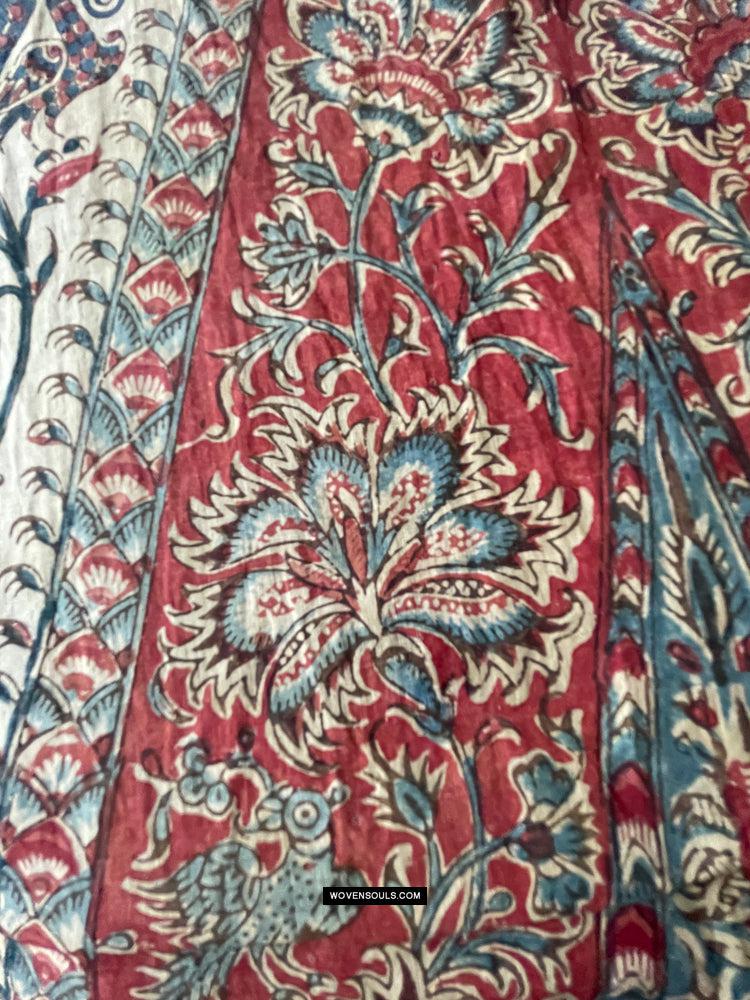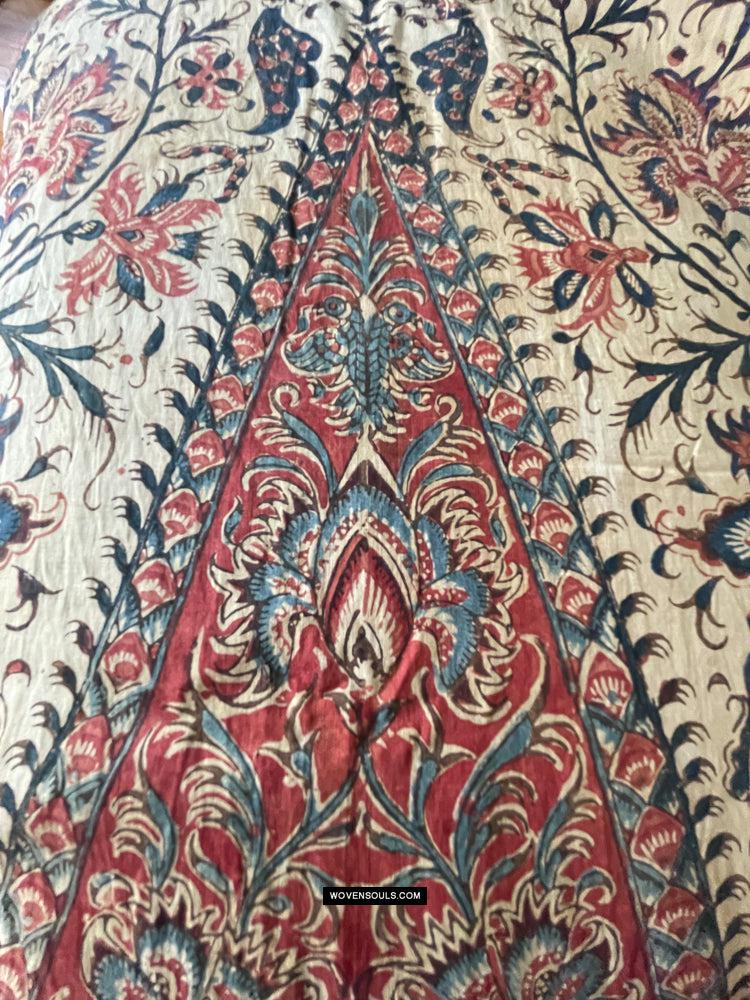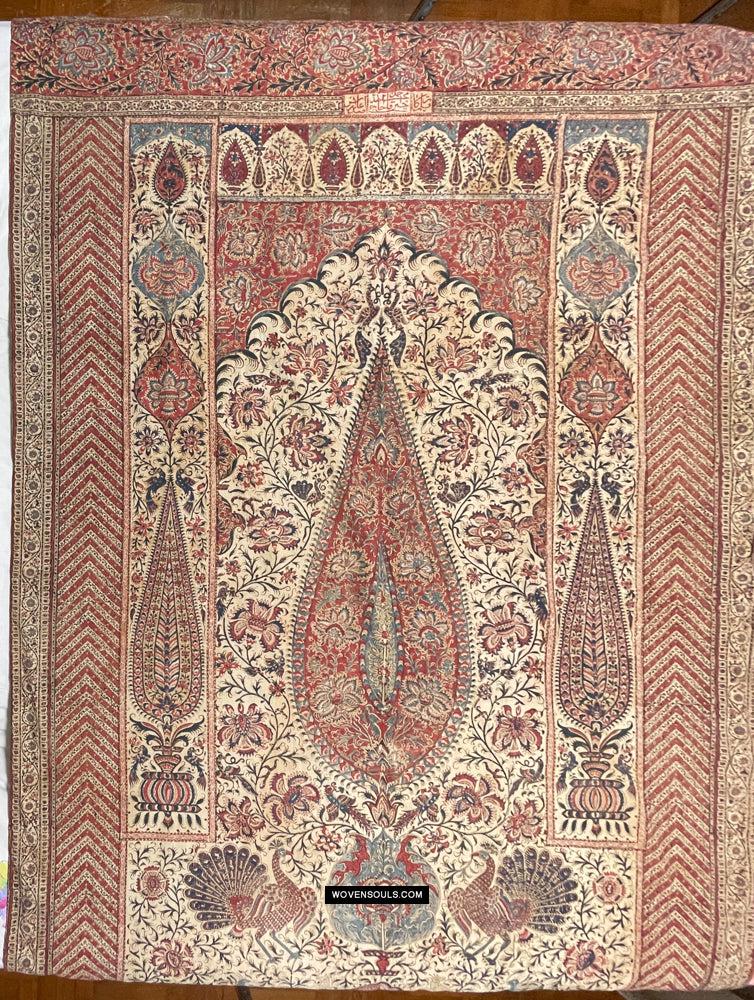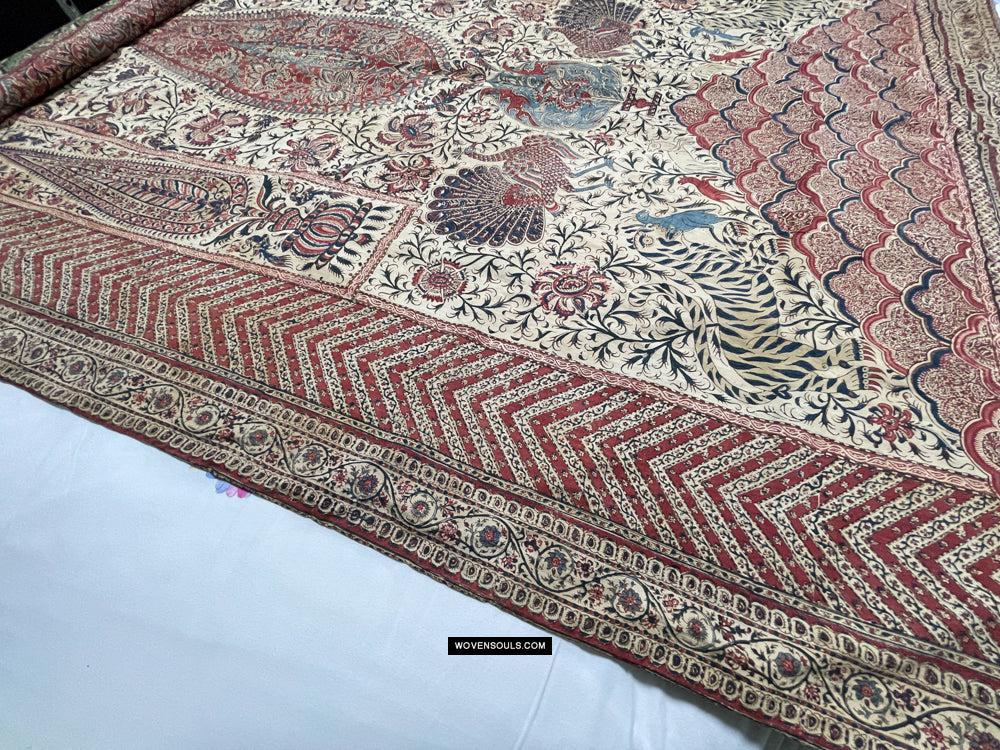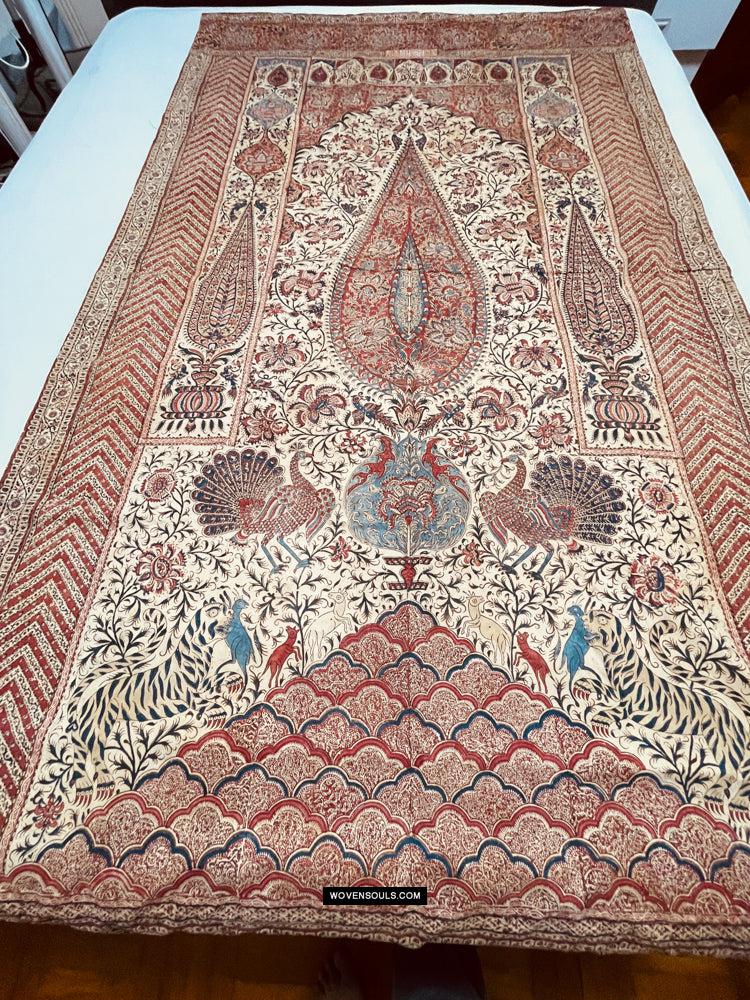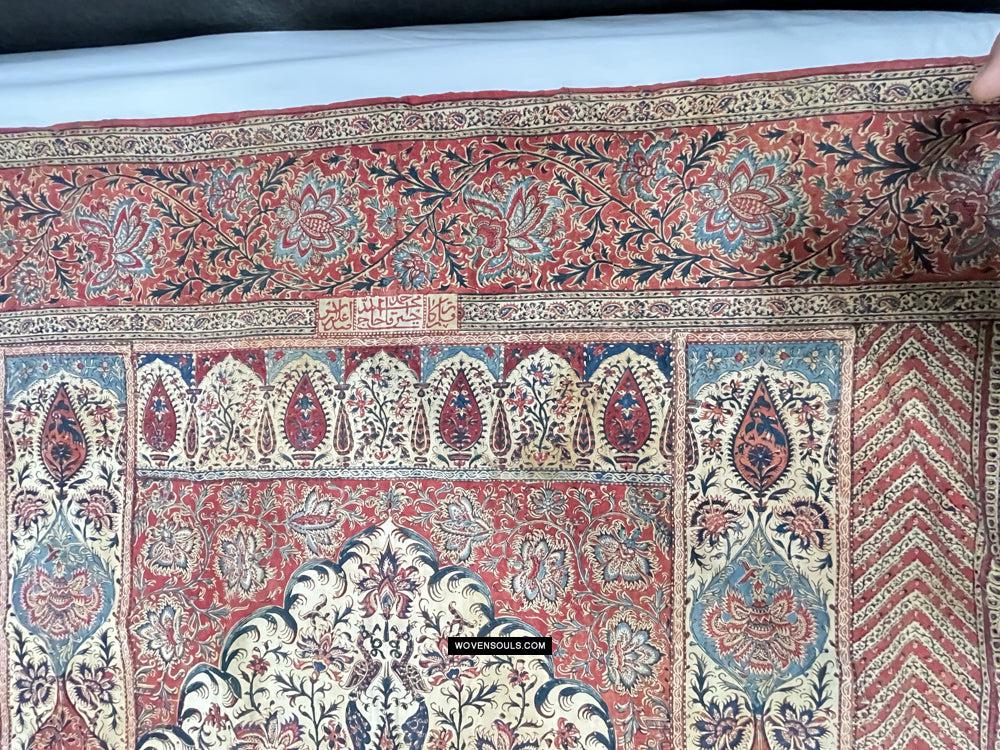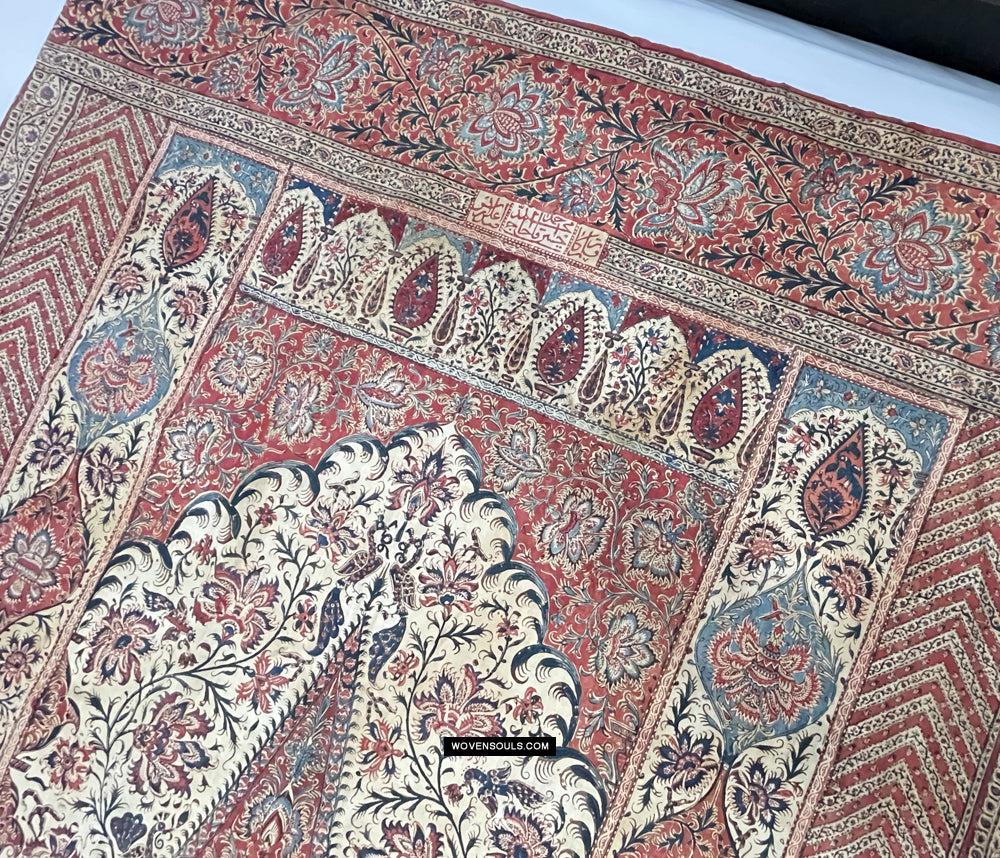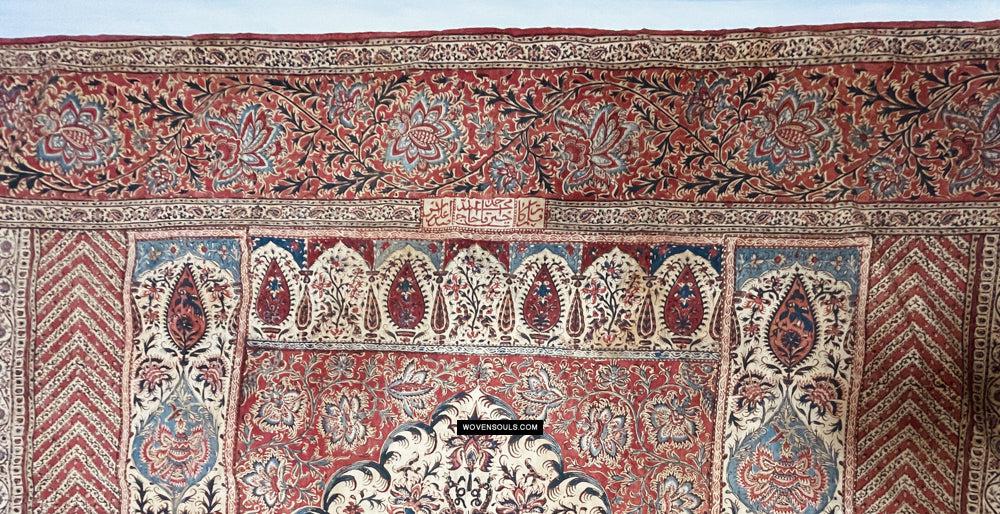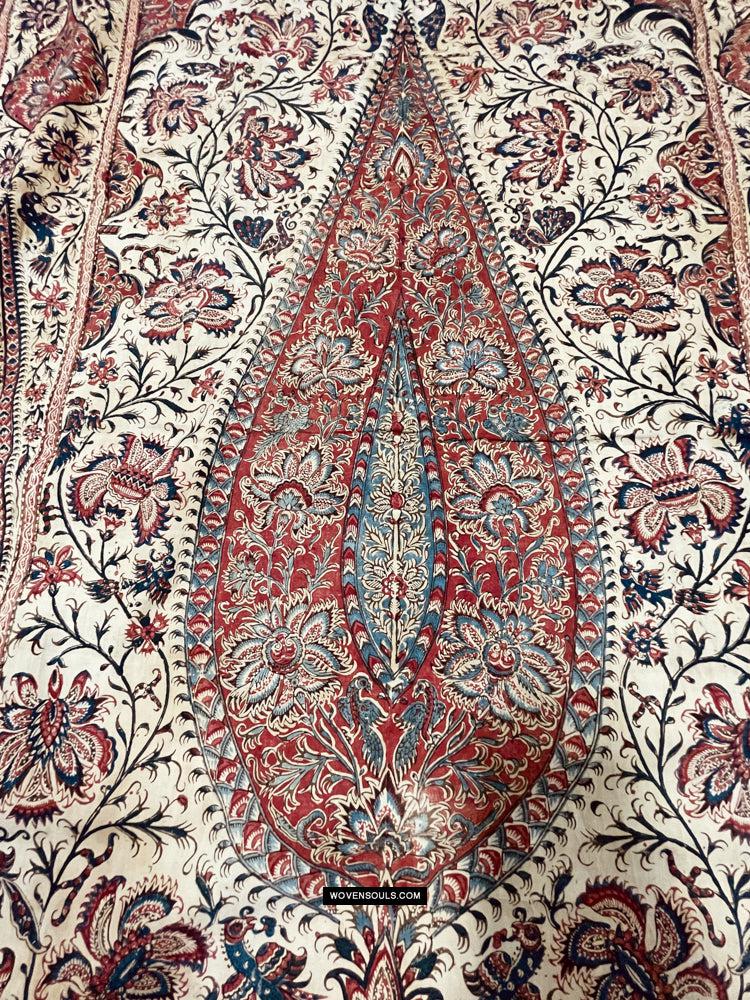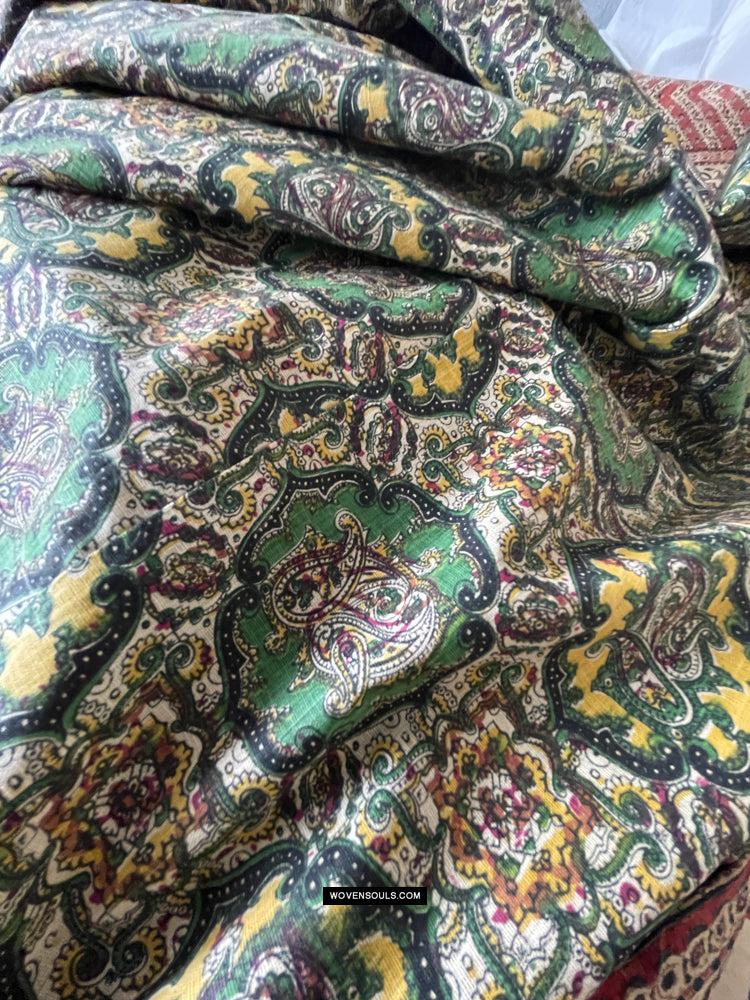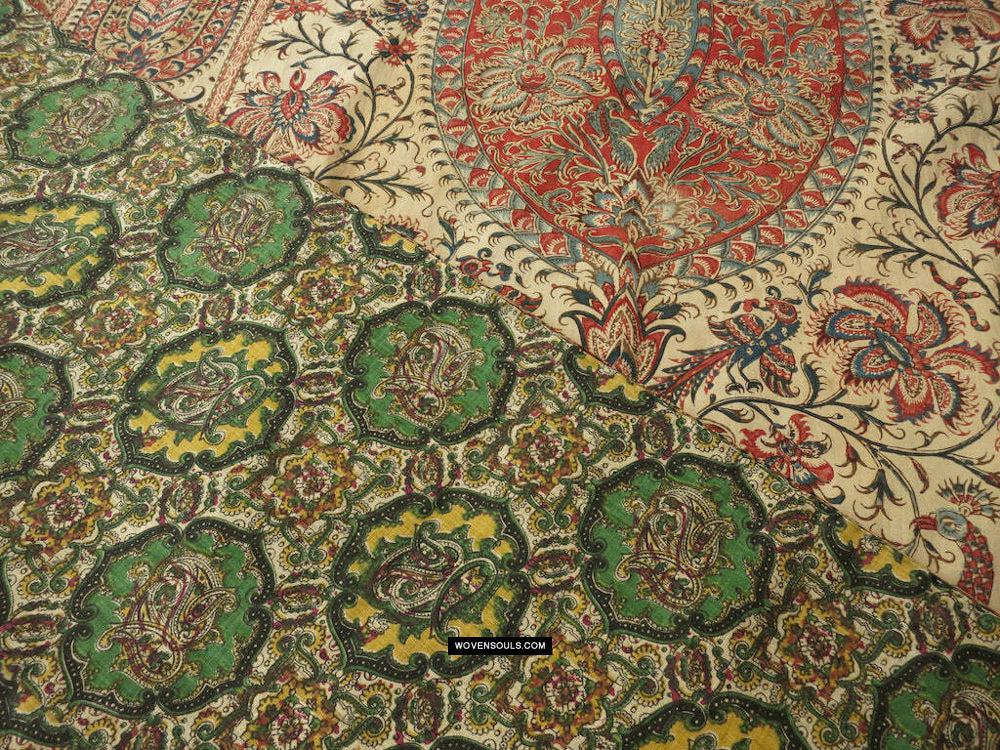1812 Antique Palampore Kalamkari - Signed
Exquisite Signed Antique Palampore or Kalamkari Masterpiece
A rare kalamkari / chintz / palampore.
This antique cotton textile beauty features a cypress tree of life, animals, birds, and flowers.
With the numerous snakes being hunted so that peacocks may thrive and deer being hunted so that tigers may live, we are presented with both, a work that pleases the eyes as well as a philosophy that offers food for thought.
The dyes are muted making this a very elegant work of art.
The ones that are younger by a century or so have darker colors and often imperfect registration (and are also available at a fraction of the price naturally).
But this particular masterpiece commands its value through the softened shades and the precise strokes.
The main colors are red and blue, both in several shades. And there is yellow on the tiger - that is very rarely seen.
This meticulously executed masterpiece is likely of Persian origin but may also be from Masaulipatinam
Signed "Kalamkari Haj Mohammad Hossein"
Estimated to be from the early 1800s.
In great condition with some minor staining and a few discolorations, its size is 44 x 76 inches (112 x 193 cm).
It is backed by a printed linen that has been hand-stitched to the front
The production technique is the similar to (or same as?) that as chintz / palampores.
This is almost identical (or may be the same?) to the one sold at Christie's in 1970.
Note: This is almost identical to 1801, with the exception of its size, border elements, and backing. Both textiles, of competing finesse, are very very rare. This one is available for immediate acquisition.
NOTE:
In printing or dyeing, the term registration is the alignment of all the various inks that are being used one by one.
In poorly done works, the colors are outside the boundary lines and there is overlap that results from poor placement.
But in this fabulous artwork - that caused love-at-first-sight in New York, there are few such flaws and registration is perfect.
Also, note that there are many pieces made about a century later. DO zoom in and study the textiles very closely and the differences between this piece from the 1800s and the later ones will reveal themselves clearly.
***
This item has spent a lifetime being used for the purpose of its creation with the original artist/user. Signs of this life lived heartily may be present on the piece in the form of stains, thread loss, loose threads, holes, tears, color run and other imperfections. Therefore the condition must be assumed to be “not” perfect. More photos of such imperfections will be provided on request.
